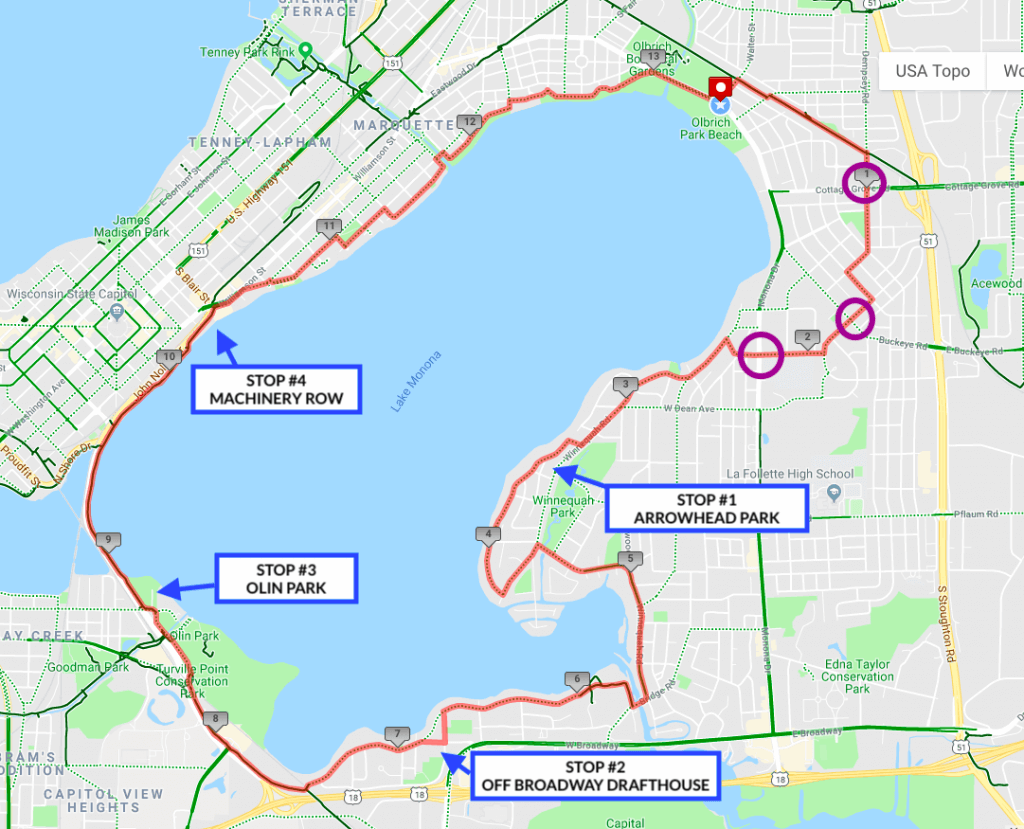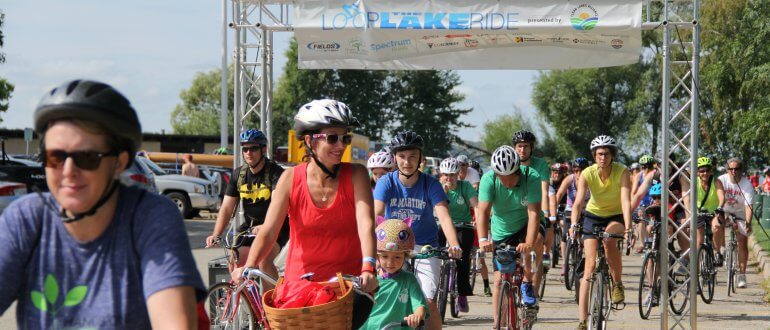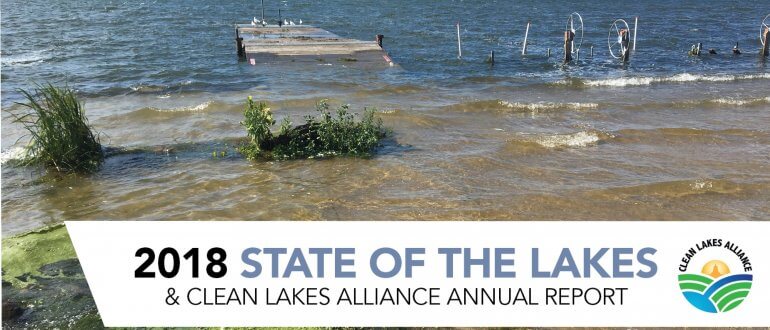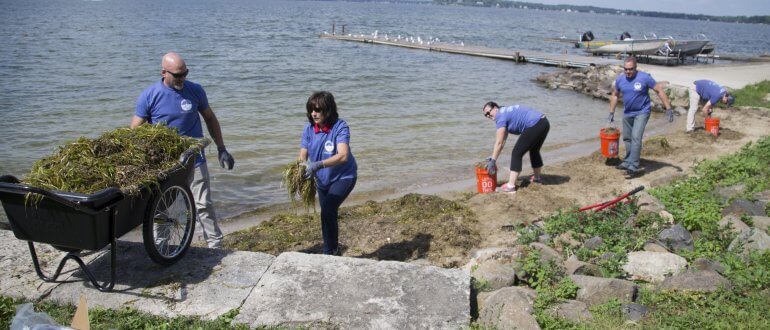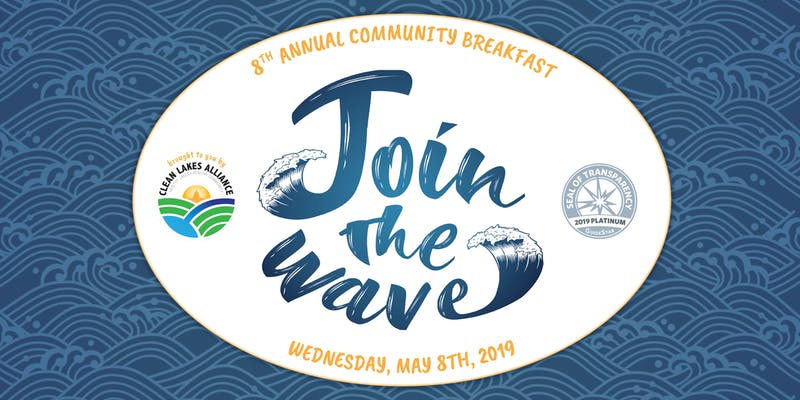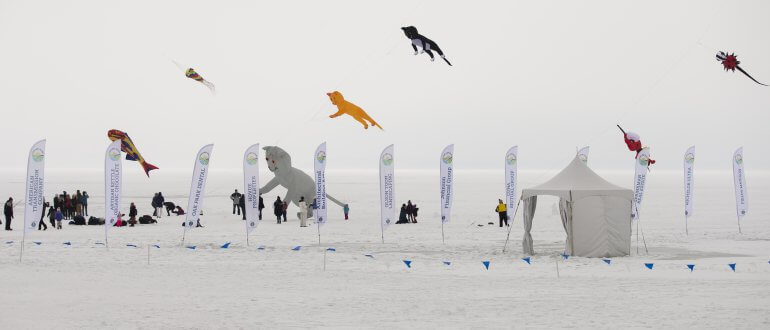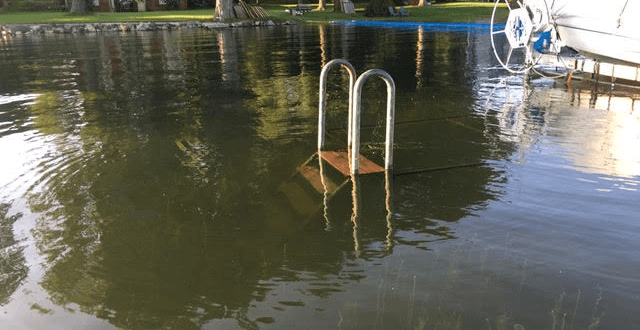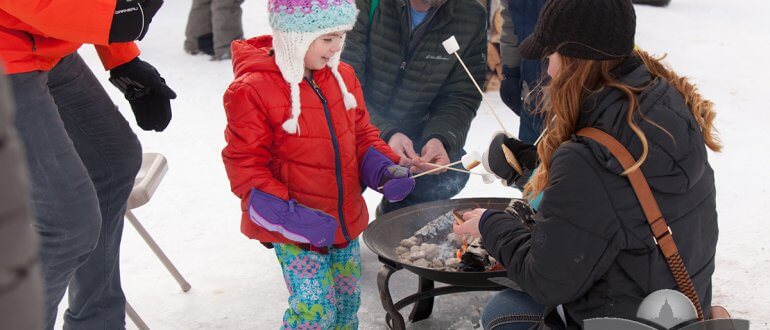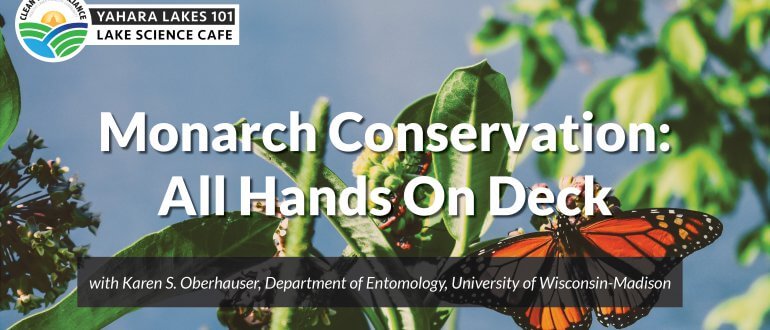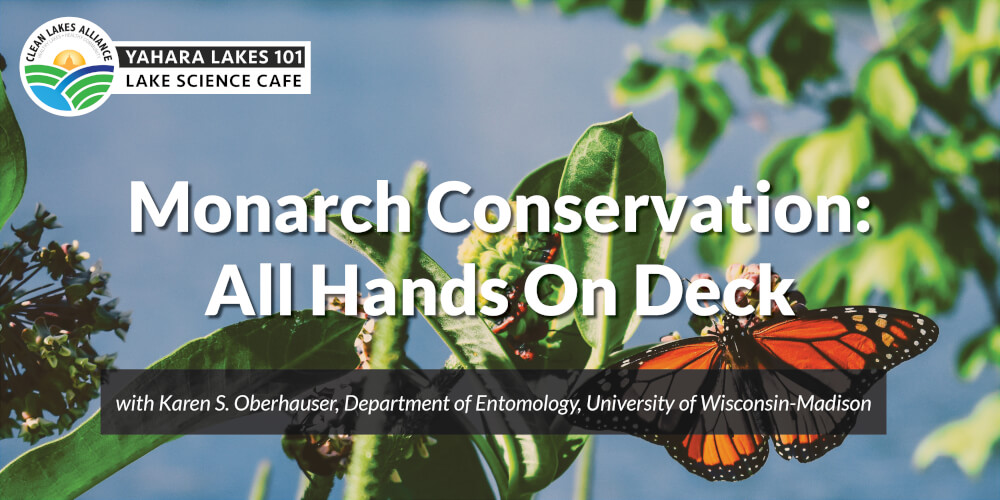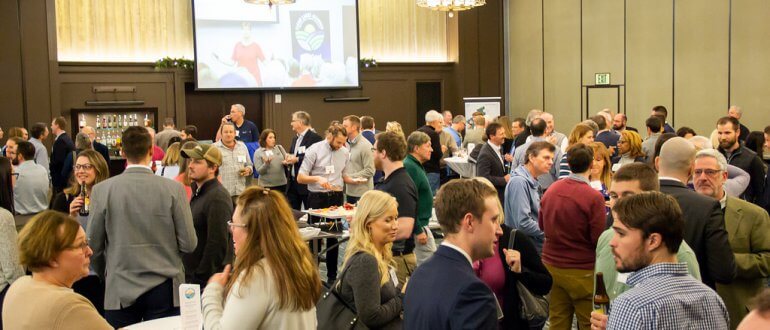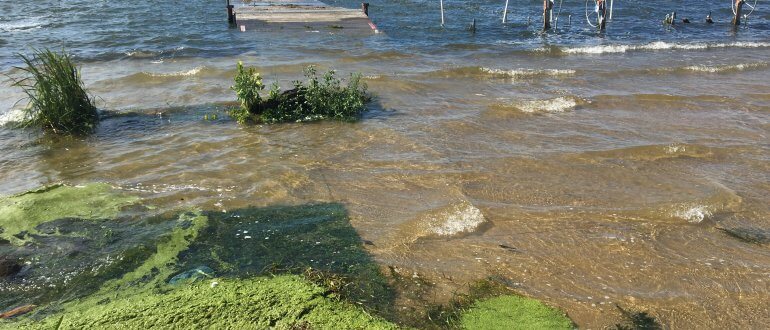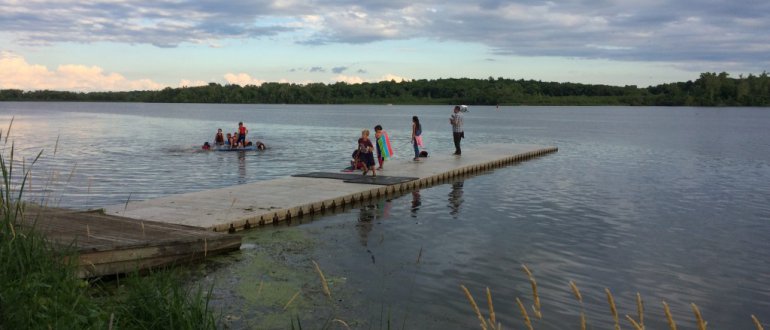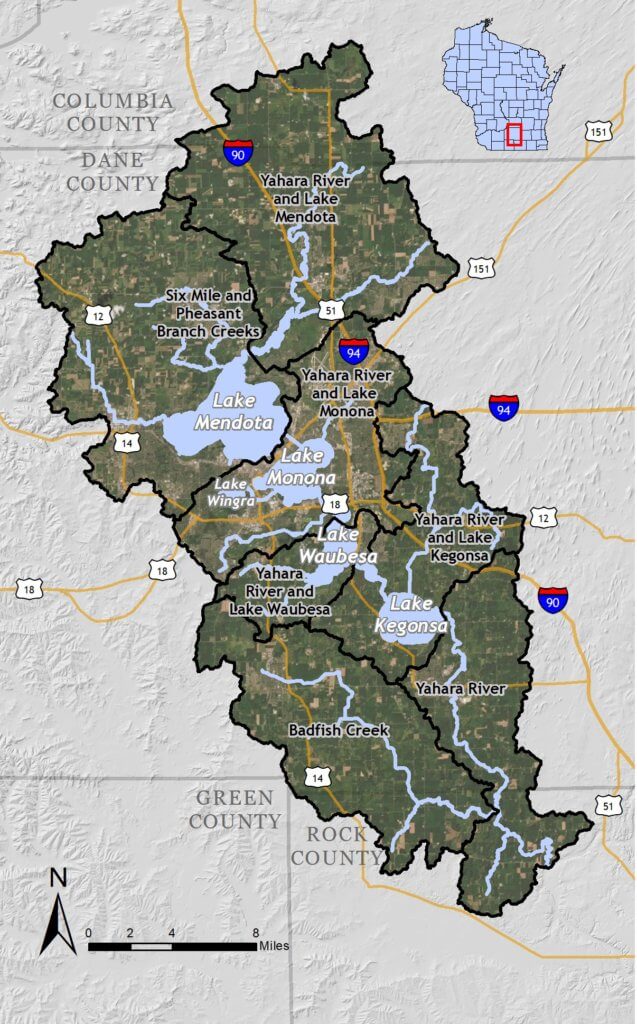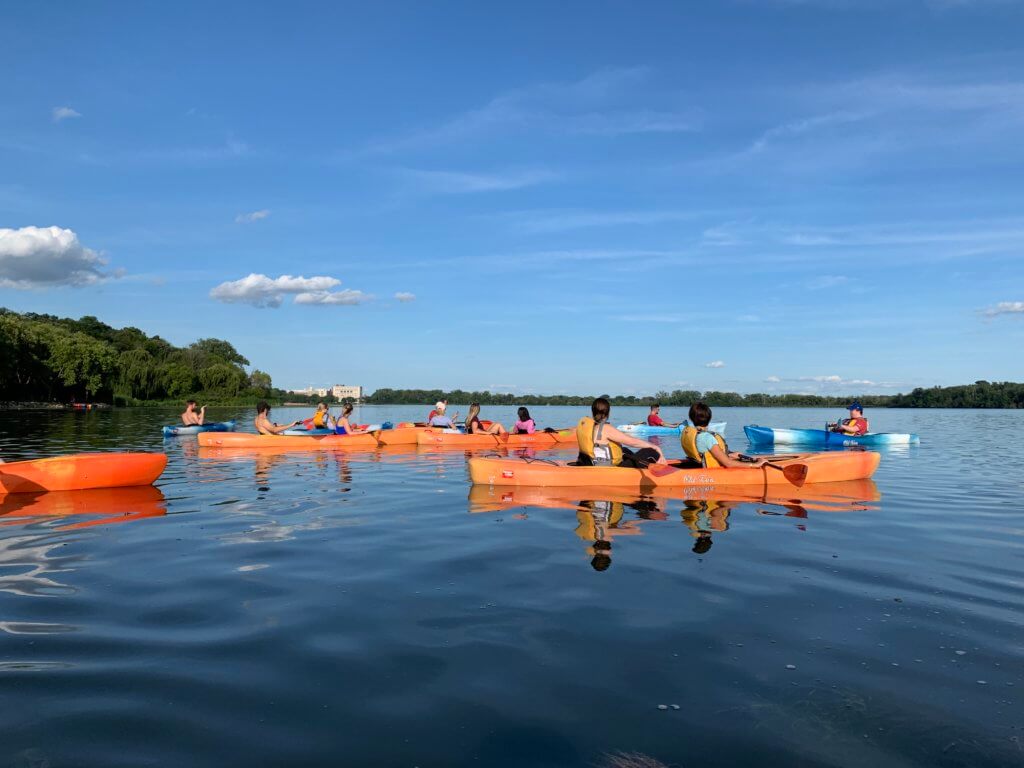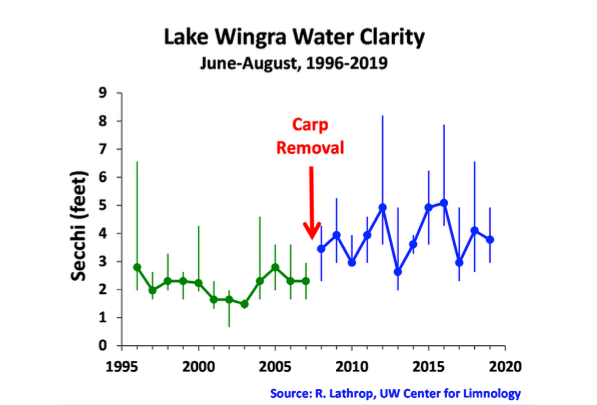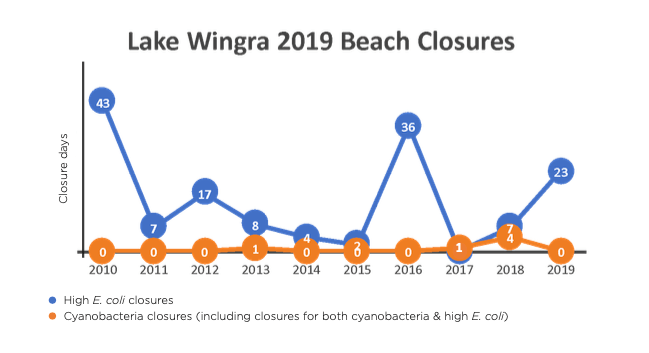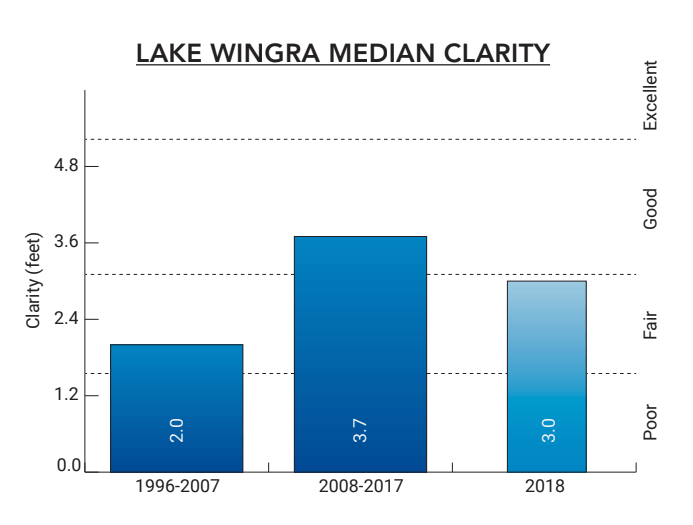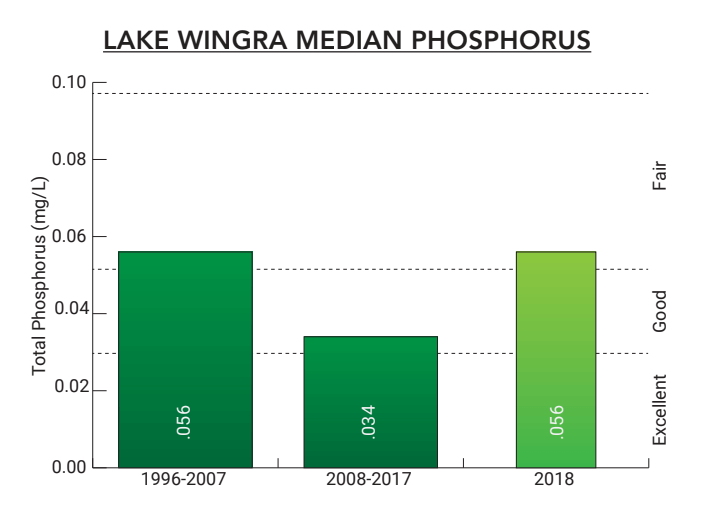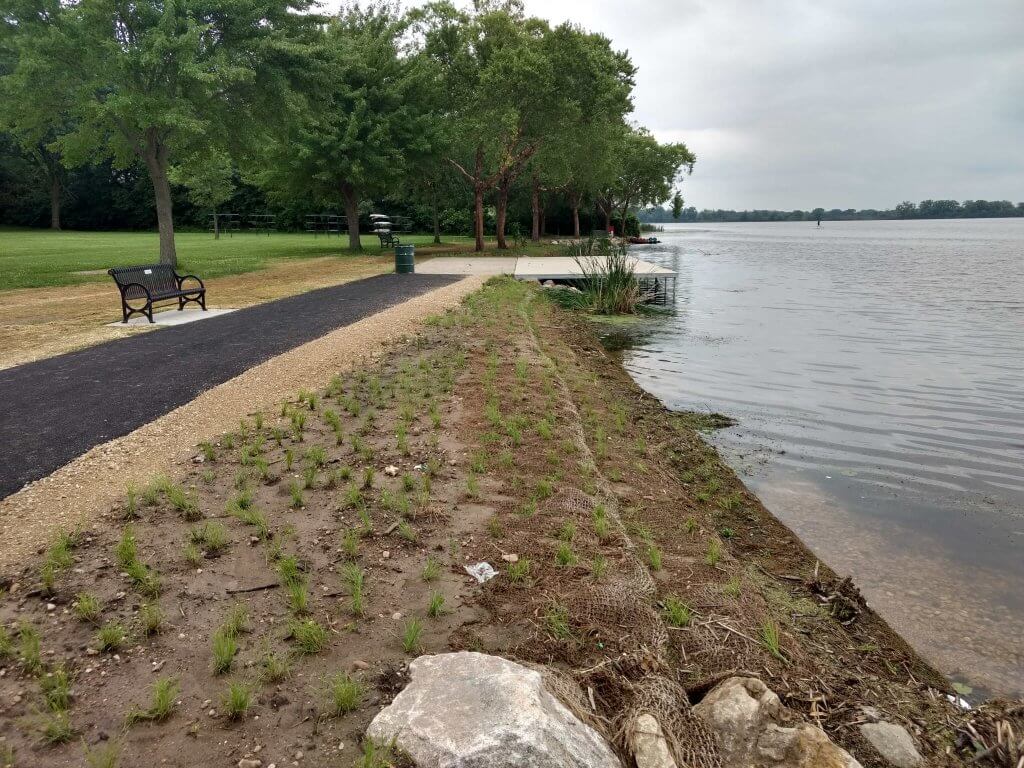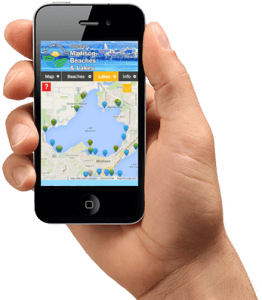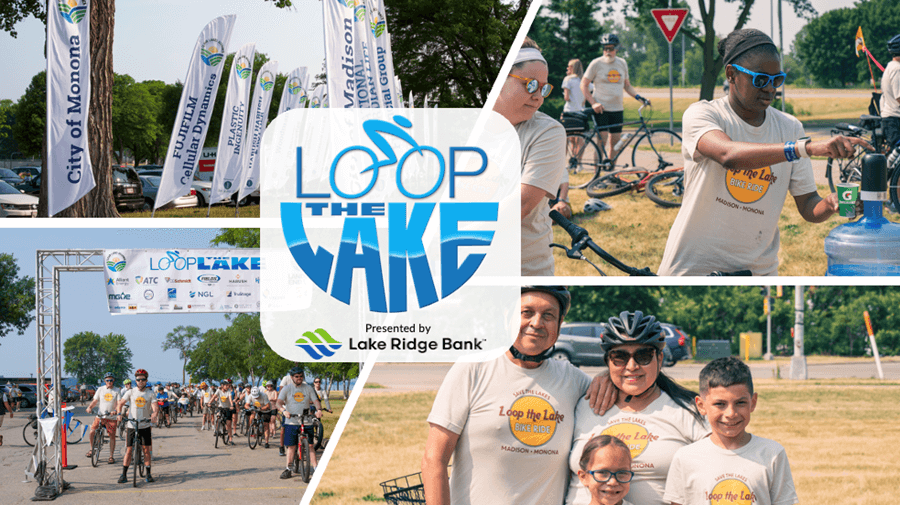April 10, 2019
@
3:00 am
–
4:00 am
Monarch Butterfly Conservation: An “All Hands on Deck” Approach for a Flagship Insect
Join us for Yahara Lakes 101 to learn about the issues that impact our lakes!
About this Talk
Our Yahara Lakes are part of a dynamic and interconnected ecosystem. As a result, the pressures that impact water quality also affect our lands, wildlife, and even insects!
At this month’s Yahara Lakes 101 talk, Karen Oberhauser of the University of Wisconsin-Madison will discuss declining Monarch butterfly populations and the “all hands on deck” approach needed for conservation. Through intentional habitat restoration, we can help increase the number of Monarchs and improve water quality in our lakes. Join us to learn how life in flight and life on the lakes are intrinsically connected!
About our Speaker
Karen Oberhauser is the Director of the UW-Madison Arboretum. She and her students have conducted research on several aspects of monarch butterfly ecology. Her research depends on traditional lab and field techniques, as well as the contributions of a variety of audiences through citizen science. Her strong interest in promoting a citizenry with a high degree of scientific and environmental literacy led to the development of a science education program that involves courses for teachers, and opportunities for youth, to engage in research and share their findings with broad audiences.
In 1996, she started a nationwide Citizen Science project called the Monarch Larva Monitoring Project, which continues to engage hundreds of volunteers throughout North America. Oberhauser has authored over 90 papers on her research on monarchs, insect conservation, and citizen science. Her new job at the Arboretum blends her work on habitat conservation, public outreach, and citizen science research.
Oberhauser is passionate about the conservation of the world’s biodiversity, and believes that the connections her projects promote between monarchs, humans, and the natural world promote meaningful conservation action. She is the chair of the Monarch Joint Venture, and a founding officer of the Monarch Butterfly Fund. In 2013, Oberhauser received a White House Champion of Change award for her work with Citizen Science.
Event Details
The event is held at The Edgewater. Come at 7:30 a.m. for a meet-and-greet and to enjoy coffee, pastries, and fruit. The program begins at 8 a.m., and class is dismissed by 9 a.m. Complimentary event parking will be available at The Edgewater.
Admission is FREE for Friends of Clean Lakes. If you are not a Friend, admission is $10 per event. Registration for each event is requested for all attendees.
Yahara Lakes 101 Lecture Series
Yahara Lakes 101 is a series of educational events open to the public and a great chance for residents to learn more about the science behind the issues that affect our lakes. Each month we feature a different expert to make the science accessible and interesting to non-technical audiences.
The series is produced in partnership with the UW-Madison Nelson Institute for Environmental Studies, with presenting sponsors First Weber Foundation and Johnson Financial Group, hosting sponsor The Edgewater Madison, supporting sponsor National Guardian Life Insurance Company, and media partner the Isthmus.
